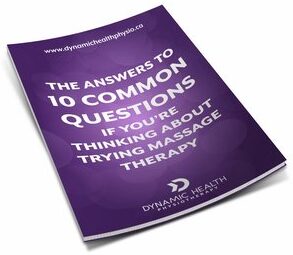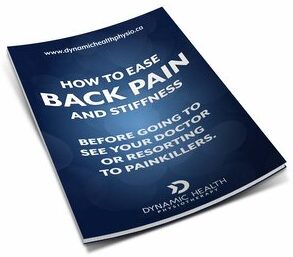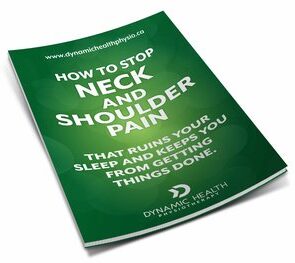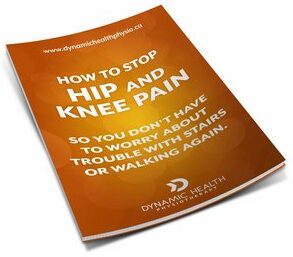- June 12, 2022
WHAT CAUSES KNEE PAIN WHEN WALKING AND BENDING AND HOW TO TREAT IT.
What causes knee pain when walking and bending and how to treat it?

As the weather turns warmer and the days get longer, we collectively come out of hibernation and often make plans to get more active. At the same time, just as you get going, you may start to notice pain or aching in your knees. Most times it comes on without warning and without any known cause.
So what causes knee pain? Why does knee pain start when you start walking or bending your knees more often. And most importantly, how do you treat knee pain so that you can continue to enjoy those longer, warmer summer days?
First, let’s talk about what causes knee pain when walking and bending.
WHY DO I GET KNEE PAIN WHEN I’M WALKING? WHY DO MY KNEES HURT WHEN I’M BENDING?
1) INCREASED ACTIVITY LEVELS
During the winter, most of us are less inclined to get outside and get active. It’s colder, it’s slippery, and the outdoor chores just aren’t as rewarding (I’m talking about shoveling snow). With the shorter days, there’s less time to fit in all the extra activities.
Now that you’re able to start walking and moving in the nicer weather and you have more daylight hours to be active, your activity level usually increases.
Knee pain can start when you go from a season of reduced activity to a season of increased movement.
Walking longer distances and starting to work in the family vegetable or flower gardens where you’re moving and bending more can lead to increased knee joint irritation.
2) KNEE ARTHRITIS – OSTEOARTHRITIS
For many people, wear and tear in the knee joints can first become noticeable with increased movement like walking and bending. Knee osteoarthritis, or boney changes within the knee, can reduce the space in the joint and put extra pressure on the surrounding area. This leaves the knee feeling more irritated and painful.
3) KNEE STRESS COMING FROM OTHER AREAS
Have you ever hurt yourself in one spot and then developed pain in another? It’s common to sprain your ankle and then develop hip pain because you have to change the way you walk while you favour the injury. The same concept applies to pain in your knees, even when it’s not an obvious injury or limitation in another part of your body causing the trouble.
Some common examples of knee pain caused by issues from other areas include: flat feet causing increased pressure on the inside of the knee; hip stiffness causing a change in your walking stride and irritation in the knee; or a sore back on one side forcing you to rely on your other knee more, forcing it to do more work.
Issues above or below the knees can certainly cause pain or stiffness in an otherwise healthy knee joint.
So what can be done once you figure out what is causing your knee pain when walking or bending?
Here are a few ideas on how to treat your knee pain so you can stay active and keep doing the things you want to do.
HOW DO I TREAT MY KNEE PAIN?
1) RAMP UP YOUR ACTIVITY LEVELS SLOWLY
One of the most common reasons for increased knee pain with walking or bending is doing too much too fast. This is going out and getting up and down in the garden on your first day out, instead of building up your tolerance by adding a few minutes to your gardening time each week. The same goes for walking. You can’t expect to start where you left off in the fall after walking all summer and possibly taking most of the winter off from your daily outdoor walks. It’s important to consider the proper progression of intensity and duration for any activity.
2) MOVE THE KNEE JOINTS MORE, NOT LESS.
While resting aching knees is often recommended and effective, too much rest is not a good thing. Once you have been properly assessed by your physiotherapist and you’re cleared to progress your activity level, you want to focus on moving your knees through as much of their full range of motion as possible, without pain.
Regular practice of knee mobility can quickly improve discomfort and allow you to move to the next step.
3) STRENGTHEN THE LEG MUSCLES THAT SUPPORT THE KNEE
Once you can move your knee freely, it is important to strengthen the supporting muscles around the knee. Doing regular, lower body strengthening and balance exercises can dramatically improve your tolerance for longer walks and regular bending.
You should also consider strengthening muscles that support other joints, including in the feet, ankles, hips, and lower back. As mentioned earlier, any weakness in these muscles may cause a chain reaction of pain and stiffness in joints above or below them.
Three of our favourite exercises include: repeated sit to stand (or squats), standing forward bends, and heel raises.
4) USE COMMON PAIN RELIEF TOOLS TO MANAGE SYMPTOMS
During the painful early stages of treating most knee pain, it can help to use heat, ice, and topical soothing creams to decrease discomfort. Supportive, but not restrictive tapes like Kinesiology Tape can also be used to improve comfort levels until your knee can better handle the increased demands of walking and bending with your regular activities. Make sure to ask your physiotherapist if taping is right for you.
In summary, the causes of knee pain when walking or bending are typically related to changes in your daily routine, stress on the knees due to issues in other muscles or joints nearby, or maybe even the slow progression of arthritis in the knees.
In any of these cases, there’s LOTS that you can do to ease knee pain and return to you favourite activities.
If you’re interested in getting a professional opinion and a plan that best suits your needs, you can get in touch with us here

Have Questions About Massage Therapy

Need some help with your back pain?

Struggling with neck or shoulder pain?
Click the button below to claim your free copy of this neck and shoulder pain tips report!

